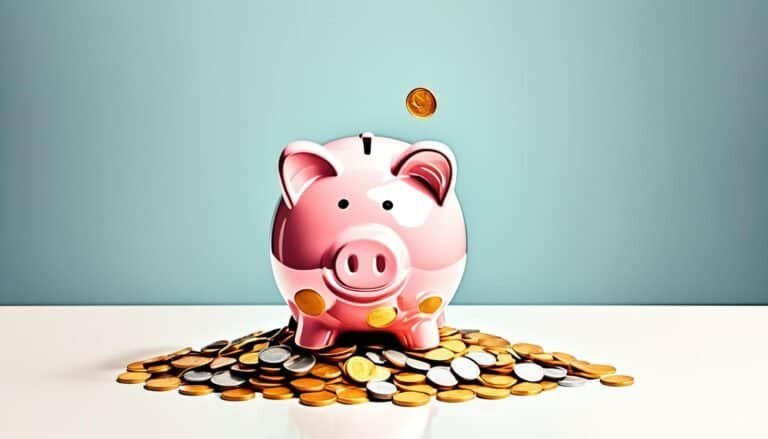How to Start a Speech: Best & Worst Openers
Imagine you’re on a stage, your heart racing, under bright lights. Before, you heard papers rustling and saw worried faces. Then, the microphone buzzes, and you’re set to speak. Starting your speech right is key to keeping the audience interested.
Abraham Lincoln’s “Gettysburg Address” is one of the top speeches ever. He began with “Fourscore and seven years ago our fathers brought forth on this continent a new nation.” This opening sets a deep tone, showing the importance of his words. Learning to start like Lincoln is vital for speaking well.
TED Talks also use strong beginnings to grab attention. Sir Ken Robinson started his famous talk with “Good morning. How are you?” This simple question connects with people and pulls them into his story. We’ll look at stories, jokes, and surprising facts that make speeches stand out.
The Importance of a Captivating Opening
Public speaking can make people feel very nervous. In fact, 61% of people get worried before they present. A good opening can help ease this worry and is key to a successful presentation.
A strong start grabs attention and sets the mood for the speech. Using smart ways to start a speech keeps the audience hooked from the start.
Capturing Audience Attention from the Start
It’s important to connect with the audience right away. Sharing personal stories or anecdotes about the topic makes people more interested. When speakers like Greta Thunberg say powerful words, they really speak to people.
This kind of opening makes people feel like they need to act now. It connects them to important issues.
The Make-or-Break Moment for Public Speakers
The start of a speech is very important. Using facts or big events makes the speaker sound credible and grabs attention. Quotes from famous people can add power to a speech.
For example, starting with something funny by Ellen DeGeneres can make people laugh and want to listen more. These strategies are great for making a speech stand out.
Best Speech Openers to Captivate Your Audience
Creating a great opener is key for speakers who want to leave a mark. Using engaging speech hooks helps the audience connect with you right away. Storytelling and humor are great ways to grab attention and keep it.
Storytelling: The Power of Narrative
Stories make people feel and connect on a deeper level. They add emotion and make the message stick. Using personal stories can make your speech unforgettable.
When telling stories in speeches, think about:
- Starting with a vivid scene to paint a picture.
- Sharing personal experiences that touch people’s hearts.
- Adding historical references for more depth.
Stories are great at grabbing attention and opening up deeper talks.
Humor: Using Laughter to Engage
Laughter is a way to connect with everyone. Adding humor to your opening can make the audience relax and listen. Here’s how to use humor well:
- Using funny stories or things that everyone can relate to.
- Adding witty lines that fit the topic.
- Keeping the humor balanced with your serious points.
Speakers who use humor well leave a big impact. It makes the audience like you more and makes the speech memorable.
How to Start a Speech: The Best (and Worst) Speech Openers
A strong speech opening can make or break its success. A great intro grabs the audience’s attention and sets the tone. But, some openers can make people tune out from the start.
Good introductions do several important things. They grab attention, connect the topic to the audience, build trust, and hint at the main points. Using shocking facts, questions, or stories can make people want to listen more.
Smart speakers use logic and psychology in their openers. They start with a clear thesis and some background info. This helps the audience follow along easily. They also try to connect the topic to the audience’s lives, making it more interesting.
Some tips for starting a speech include skipping boring greetings or saying sorry too much. Quick speakers might fidget with papers or thank people too much, losing time. A short pause can build excitement and keep everyone’s attention. Starting with a personal story or a big statistic can make your speech stand out.
In the end, a few tweaks can make your speech unforgettable. A strong intro with engaging openers can really boost your impact.
Shocking Openers to Jolt the Audience
Getting an audience’s attention can be hard. But, using shocking speech openers can help. These openers grab attention and make people think. They set the stage for a talk they won’t forget.
Starting with surprising facts or props can grab an audience’s attention right away.
Surprising Facts and Statistics
Statistics can really make an impact. Saying that 100% of us will die makes us think about our own lives. It makes us want to listen to what you have to say.
Using unexpected insights, like Simpson’s Paradox, can lead to interesting discussions. It shows how data can be misleading.
It’s key to make sure the stats you share are right and matter to your audience. This builds trust and connects with your listeners. For example, saying over 70% of presentations don’t grab the audience from the start shows a common problem. It opens up a chance to talk about how to do better.
Physical Props and Actions
Using props can make your message even more shocking. Imagine showing a strong visual right after a surprising fact. This mix of words and pictures makes your message stick.
Showing different scores or cool visuals can help people understand and remember better. People remember pictures more than words.
Adding interactive parts can make your talk more fun. Asking tough questions or making people think about scenarios gets them involved. This makes them feel connected and encourages them to take action based on the stats you shared.
Rhetorical Devices for Powerful Introductions
Learning how to use rhetorical devices can make your speech introductions more powerful. Adding mystery and curiosity will make your audience want to listen more. There are four key devices that can make your speech better: alliteration, antithesis, parallel structure, and repetition.
Raising Curiosity with Mystery
Alliteration is when words start with the same sound. It makes your message easier to remember. But, don’t use it too much, or it might sound silly.
Antithesis puts two opposite ideas together to highlight key points. It grabs your audience’s attention to your main message.
Parallel structure makes your speech flow better by using similar sentence structures. Steve Jobs used this in his famous Stanford speech. He repeated *“Stay Hungry, Stay Foolish,”* which made his message stick.
Repetition helps people remember important points. At the Macworld 2007 event, Jobs used anaphora and epiphora. He repeated *“reinvent the phone,”* making his speech unforgettable. His speeches got millions of views and left a big mark.
Inspirational Quotes as Speech Openers
Using inspirational quotes in your speech can make a big impact. A good quote fits the theme and makes you sound more credible. Many great speakers use quotes to start their speeches. They help build a strong message.
Setting the Tone with Wisdom
Starting with a quote can grab the audience’s attention. Famous people share ideas that match your message. For instance, Chris Anderson from TED Talks says starting strong is key to keeping the audience interested.
With a great quote, you set a tone of authority and insight. This helps you connect with your audience.
- The first impressions can dramatically impact how an audience perceives a speaker.
- Using a quote can pave the way for storytelling, creating a stronger engagement.
- Famous quotes also help showcase the resonance of your message with established thoughts.
Quotes are powerful tools for connecting with your audience and sharing big ideas. When choosing a quote, think about how it fits with your main message. Using strong quotes can make your speech more memorable and influential.
Shifting Perspectives with Bold Intros
Bold openings change how we see things. They start a conversation that makes us think. Jamie Oliver used stats in his TED talk to make us think about food choices.
Oprah Winfrey and Lisa Nichols show how stories connect with us. Their stories make us feel and want to listen more. They ask powerful questions that make us think deeply.
- Emphasize clarity and precision in every statement.
- Start with confidence to establish authority and interest.
- Utilize humor or creative elements to set a compelling tone.
- Incorporate effective speech transitions to maintain flow.
- Engage through movement and visual aids for enhanced comprehension.
Using different kinds of questions gets people talking. Visual aids like graphs make presentations more interesting. Bold openings grab our attention and make the message stick.
Common Speech Opening Blunders
Starting a speech is very important for good communication. Many speakers make mistakes that can make them less effective. It’s important to know these mistakes to grab the audience’s attention from the start.
Technical Troubles and Nervousness
Technical problems can mess up even the best speakers. They make speakers more nervous. The audience notices if a speaker is nervous, which can make them think less of the speaker.
Starting with an apology, like saying “I’m sorry for the delay,” is a big mistake. It makes the speaker seem less confident and doubts the audience.
Boring Pleasantries and Niceties
Too many nice words at the start can bore the audience. Saying thanks too much or going into who you are doesn’t grab attention. Lisa Marshall from Toastmasters International says to focus on impactful openers instead.
Great first impressions happen in the first 30 seconds. The right opener is key to making a strong start.
Crafting the Perfect Introduction
A strong speech starts with a great introduction. It grabs the audience’s attention. Making a good introduction can make your speech stand out. It takes thought and practice to find the right opener.
It’s important to think again about your first ideas. Make sure they connect well with your audience.
Rehearsing and Refining Your Opener
Practicing your introduction is key to doing well. Here are tips to make your speech introduction better:
- Practice regularly: Rehearsing helps you get used to it and feel more confident.
- Solicit feedback: Ask friends or colleagues what they think of your opener.
- Adjust timing: Make sure your intro fits the time you have. It should be about 10-15% of your whole speech.
- Emphasize clarity: Use stories, fun facts, or jokes to grab attention and make your message clear.
- Maintain flexibility: Change your opener if the audience seems to like it better.
Adam Grant says a good intro has interesting parts that make people want to listen. It should keep them curious without giving away too much. Avoid being too nice or giving away too much too soon. With careful practice, your intro will not only catch people’s attention but also inspire them to listen more.
Engaging Examples from Great Speakers
Looking at inspiring speech openers from famous speakers teaches us a lot. These examples show how a great start can grab the audience’s attention. They make people look forward to what comes next. From TED Talks to old speeches, many ways can make a speech stand out.
TED Talks and Historical Speeches
Many famous speakers start with humor. This grabs the audience’s focus right away. It makes them more likely to listen and believe what the speaker says.
Using props can also be a hit, adding a surprise to the talk. Starting with a question that makes people curious works well too. It keeps them interested and makes the speaker seem more sure of themselves.
Building suspense by hinting at a big reveal keeps the audience on the edge of their seats. This makes them emotionally connect with the story being told.
Learning from great speeches also means knowing what not to do. Old speeches that had tech problems or weren’t well-prepared teach us about the need for a solid plan. These lessons help us get better at starting speeches in a captivating way.
Conclusion
Learning how to start a speech is key to making a big impact. A great start grabs the audience’s attention and connects with them. This can greatly improve how well your message is received.
We looked at different ways to start a speech, like telling stories, using humor, or making shocking statements. These methods help keep your audience interested from the start.
When you’re getting ready to speak, don’t forget about a strong ending. Wrap up your main points and finish with a call to action. This makes your audience think more about your message and want to learn more.
Work on your speech introductions to improve how you connect with people. With time and practice, you’ll get better at public speaking. You’ll make a big impact every time you speak.
Source Links
- How to Start a Speech: The Best (and Worst) Speech Openers
- 9 Killer Speech Openers to Start a Talk or Presentation
- Public Speaking Tips to Engage Your Audience – 98thPercentile
- How to Start a Speech: The Best Ways to Capture Your Audience
- Five of the Best Speech Opening Lines | Ginger Leadership Communications
- 32 great speech opening lines | Captivate Audience From the Start
- The 9 Best Speech Introductions – Clear Communication Academy Team
- Speech Introductions | Writing & Speaking Center
- Your complete guide to writing and delivering a better speech
- Speech Openings Which Immediately Grab Attention
- How can you use a shocking statistic to create a memorable introduction?
- How to Start a Presentation: 5 Strong Opening Slides and 12 Tricks To Test
- Rhetorical Devices
- 17 rhetorical devices that will make you sound like Steve Jobs | Duarte
- Common Rhetorical Devices List | Writers.com
- Opening a Speech: Get Their Attention from the Start!
- HOT Speech Openings Which Immediately Grab Attention – BigImpactHQ™
- words and phrases to connect your ideas – VirtualSpeech
- Three speech opening mistakes that you probably thought were a good idea — Anthony Sanni| Productivity Expert, Coach and Speaker
- Opening a Speech: Get Their Attention from the Start!
- How Not to Introduce a Speaker
- Introductions and Conclusions
- Tero Article | How to Introduce a Speaker
- 15 Powerful Speech Opening Lines (And How to Create Your Own)
- 15 Bad Speech Examples To Learn From To Improve Your Presentations
- 10.2 Conclusions
- How to End a Speech: What You Need for a Bang | Brian Tracy
- The Eight Worst Ways to Start a Speech – Public Words







